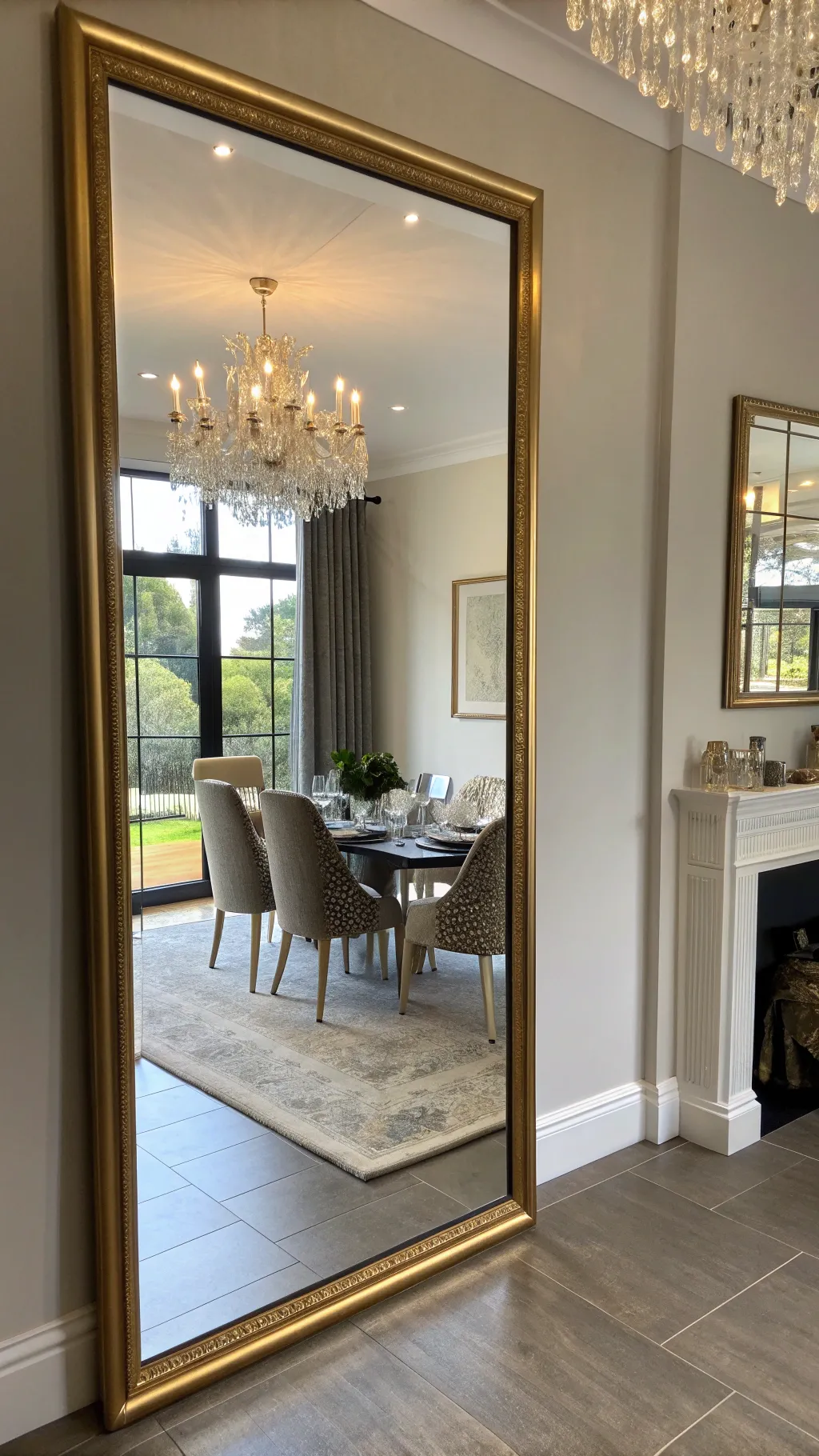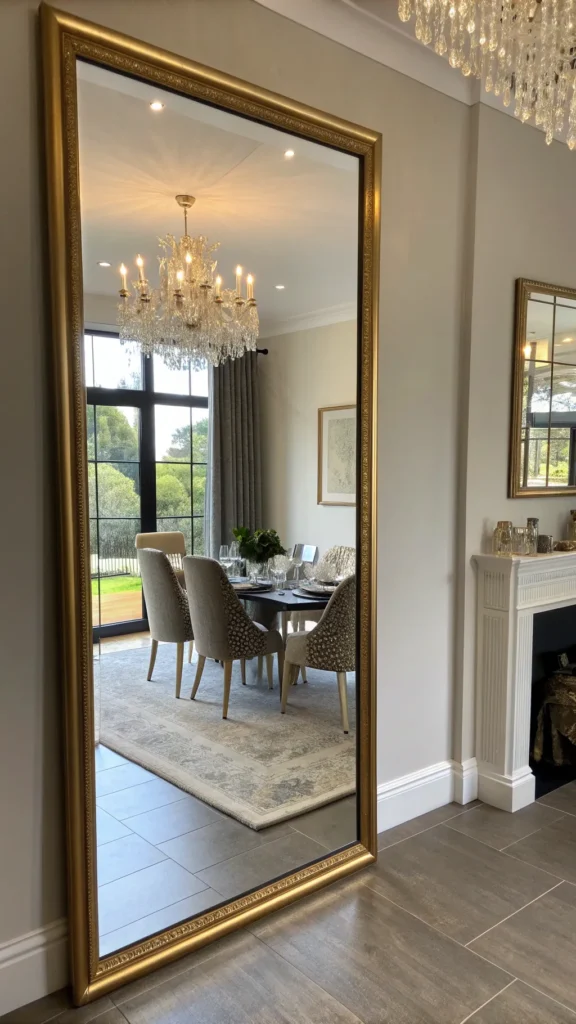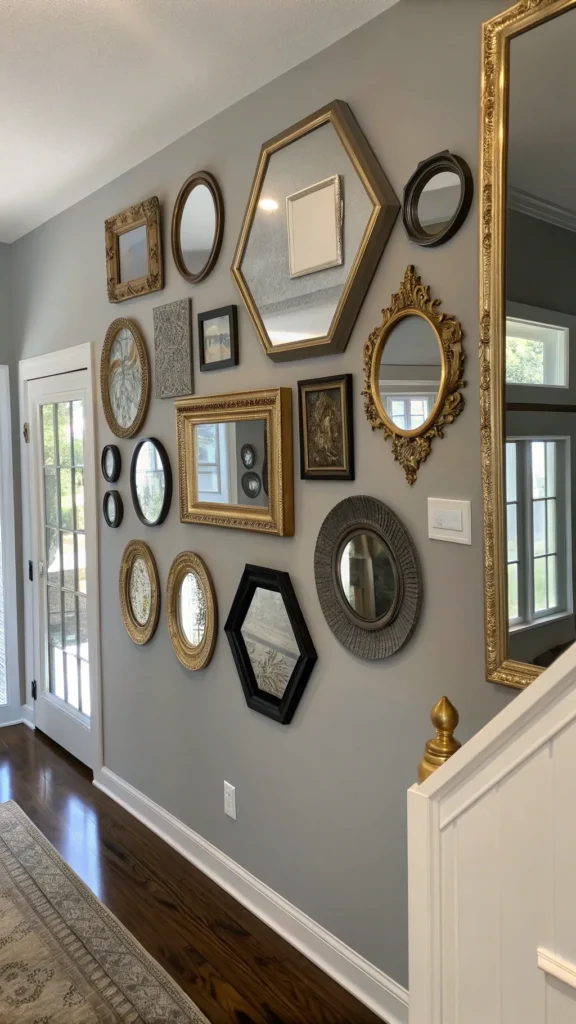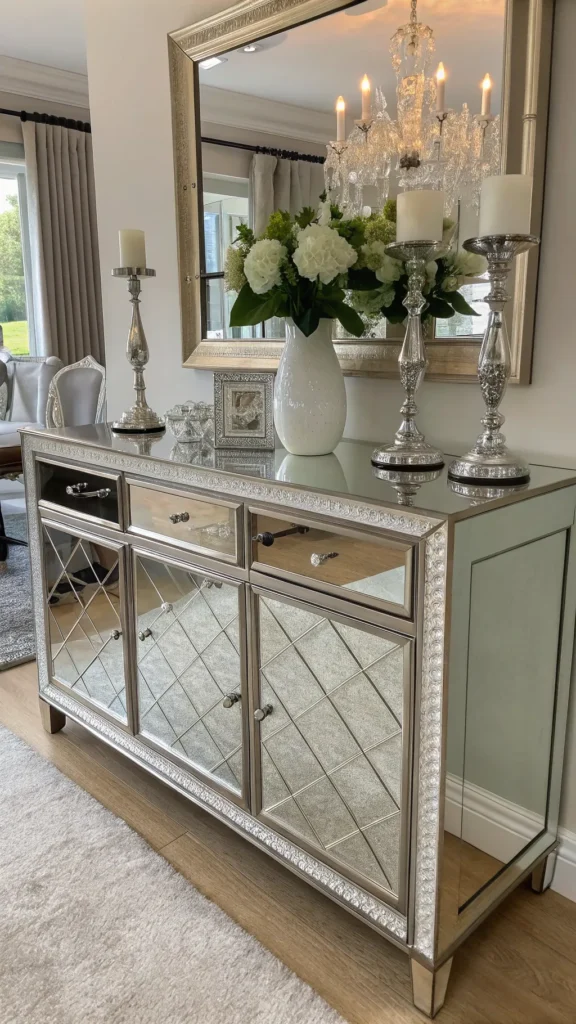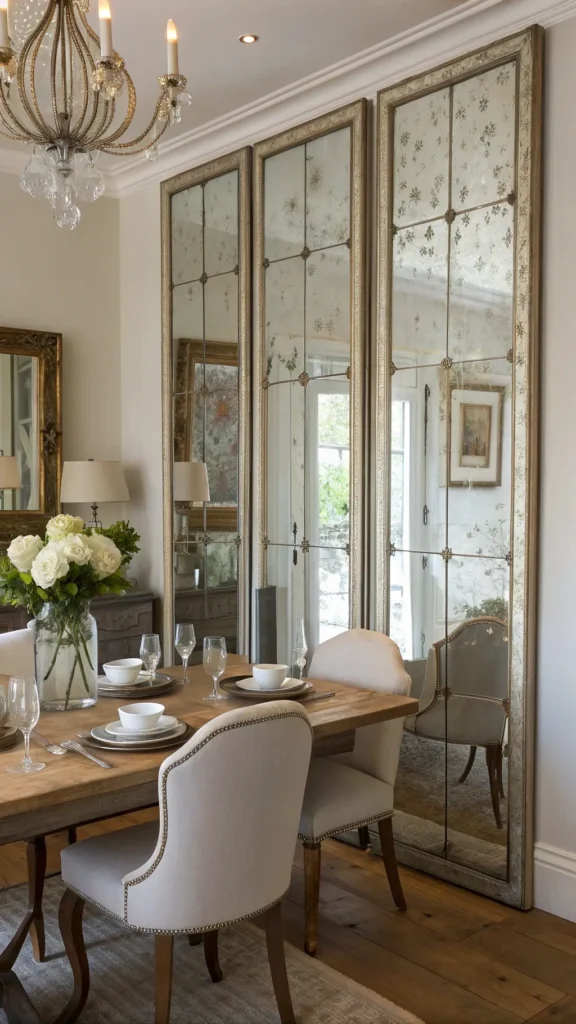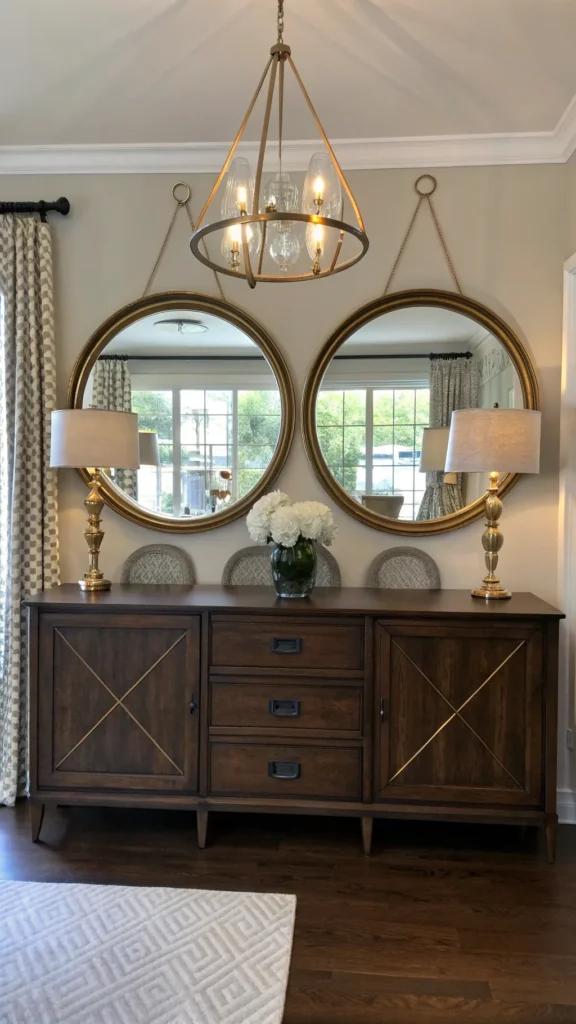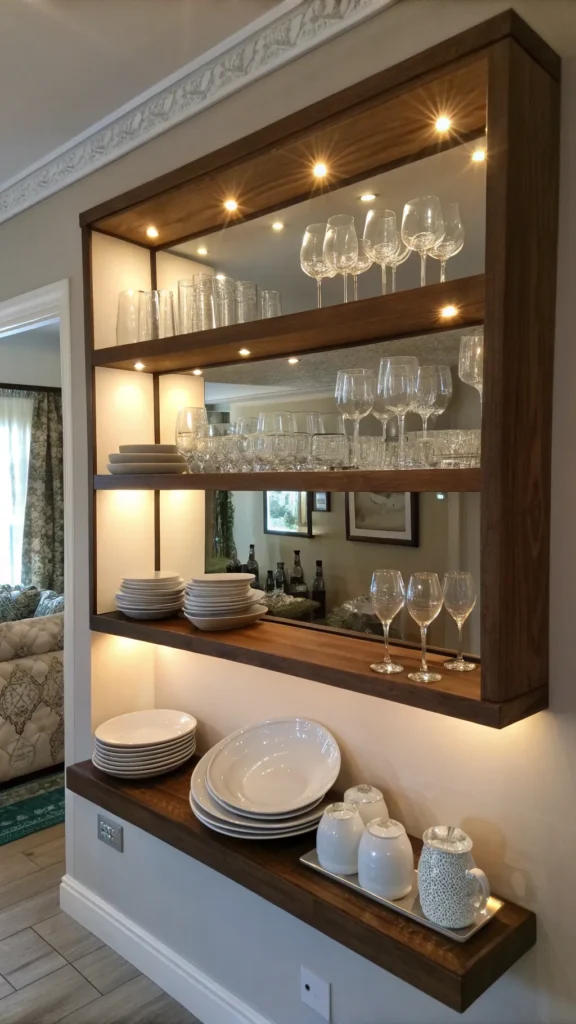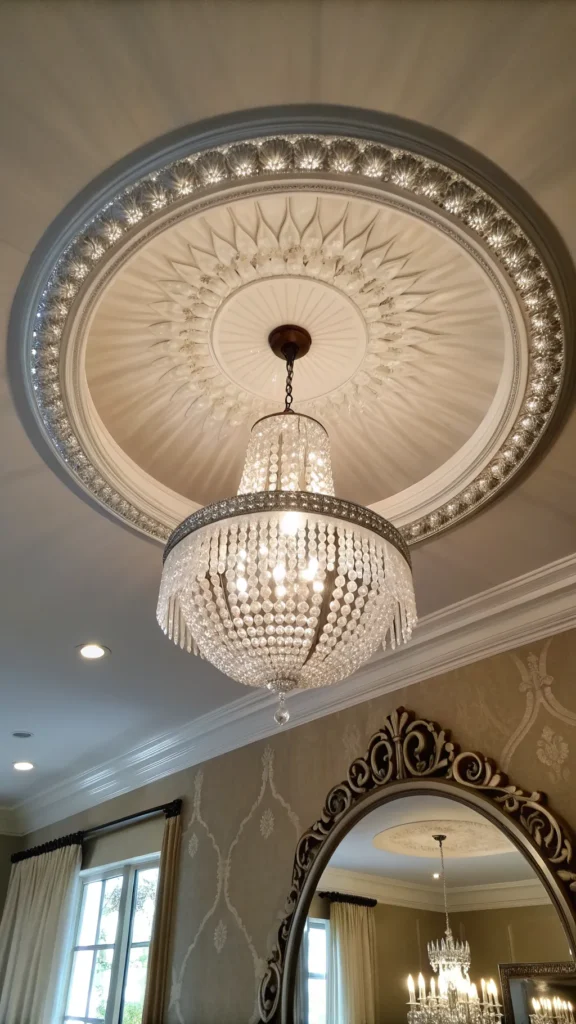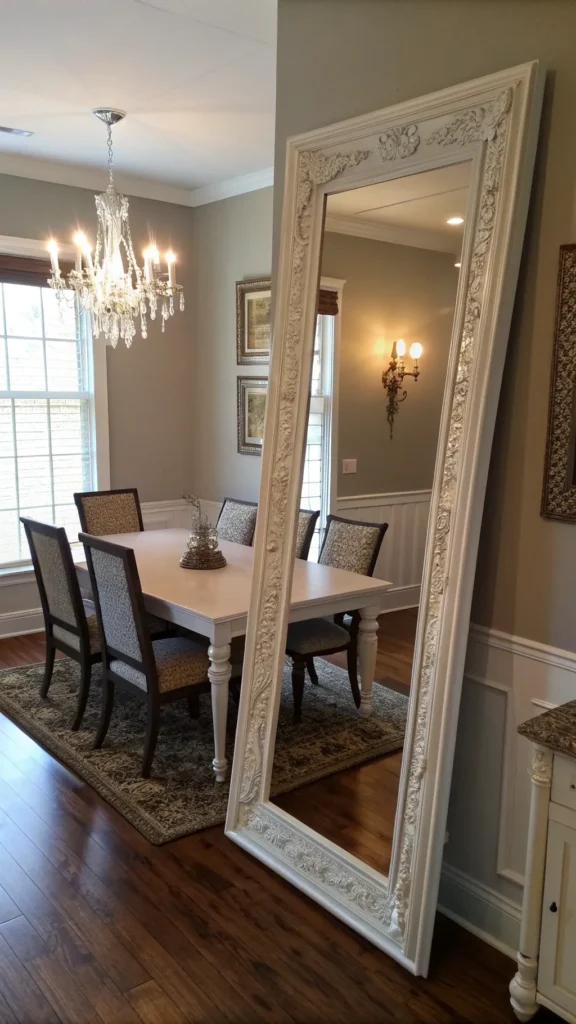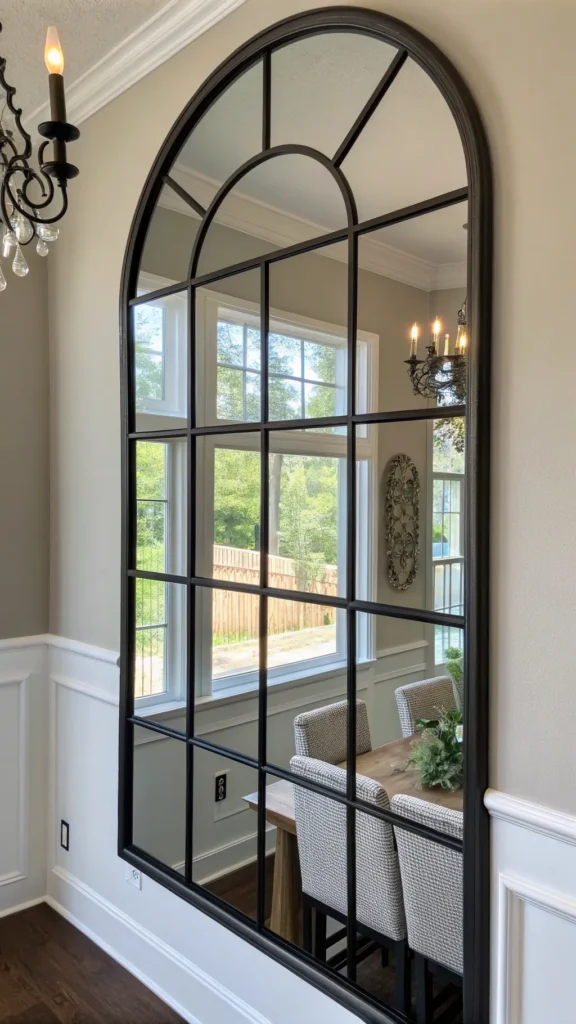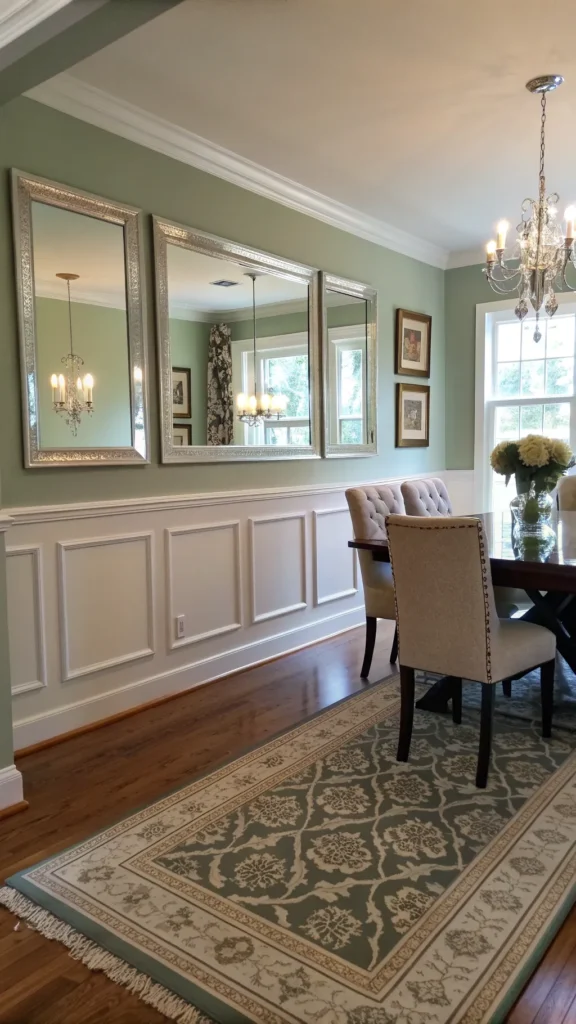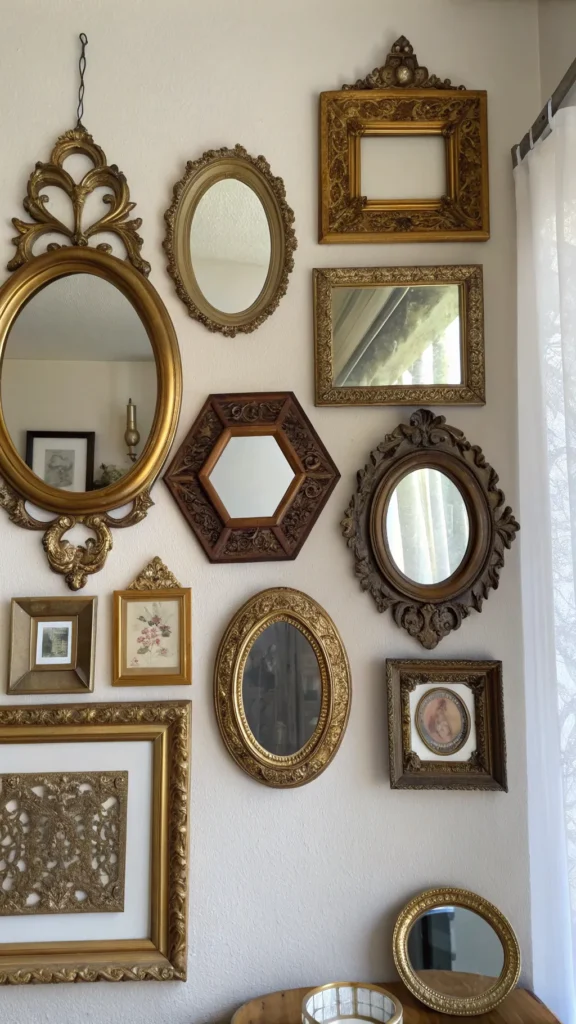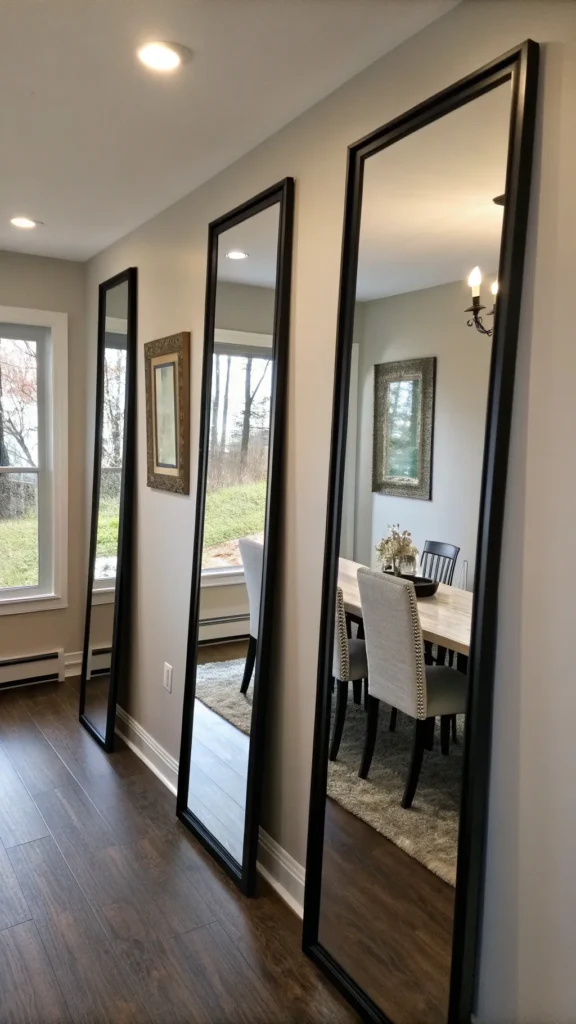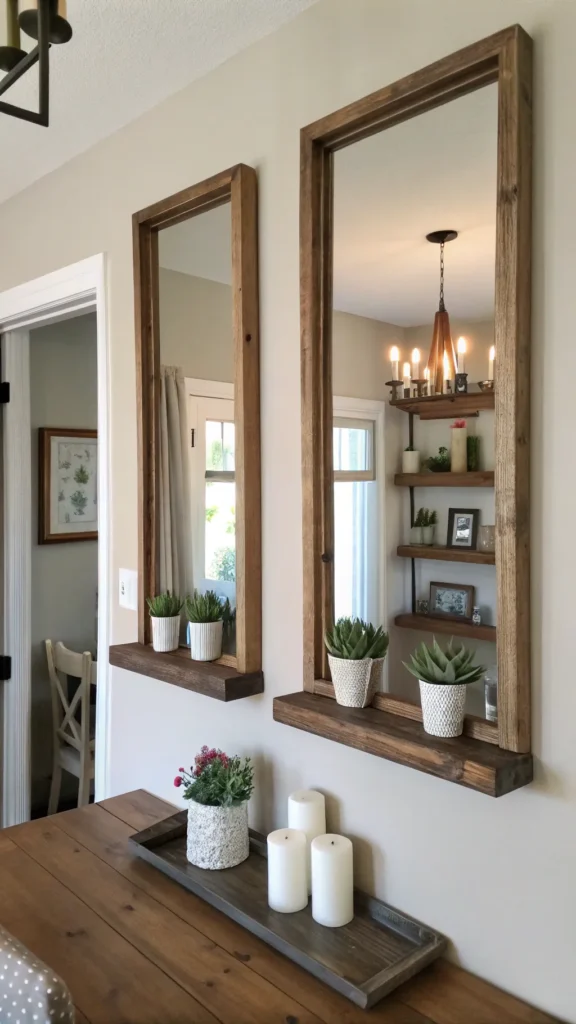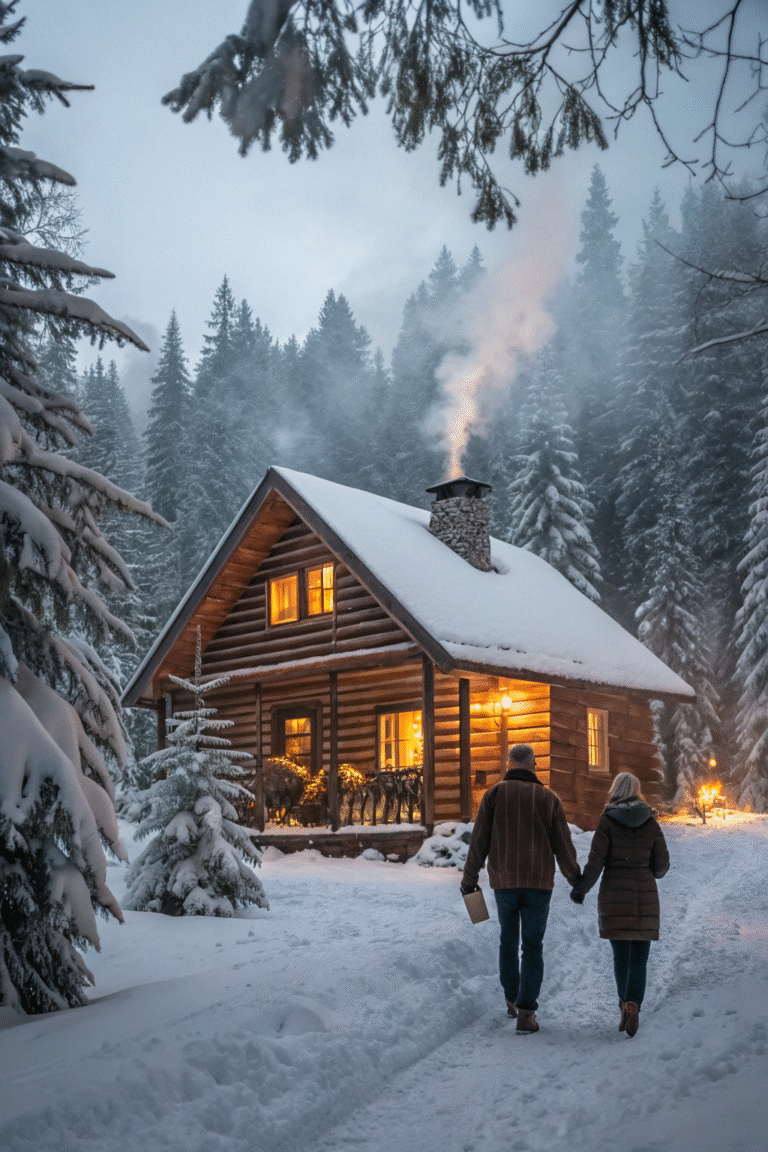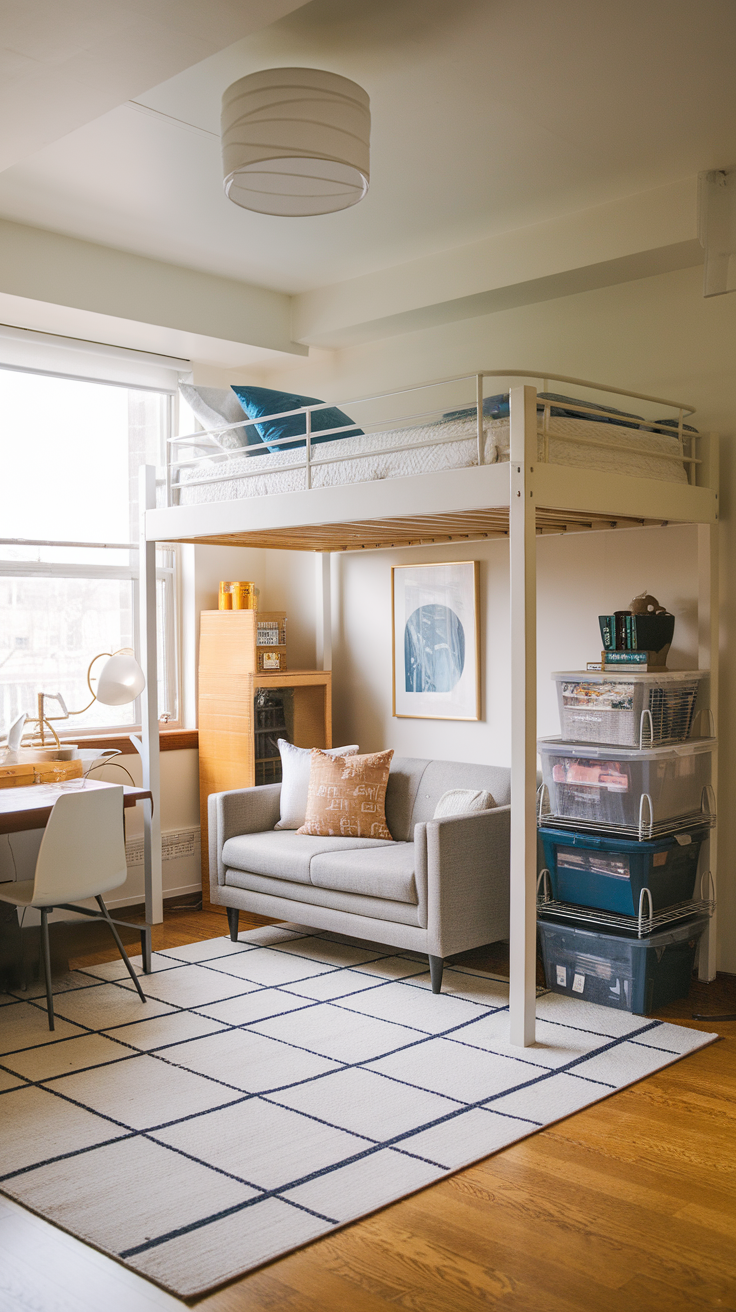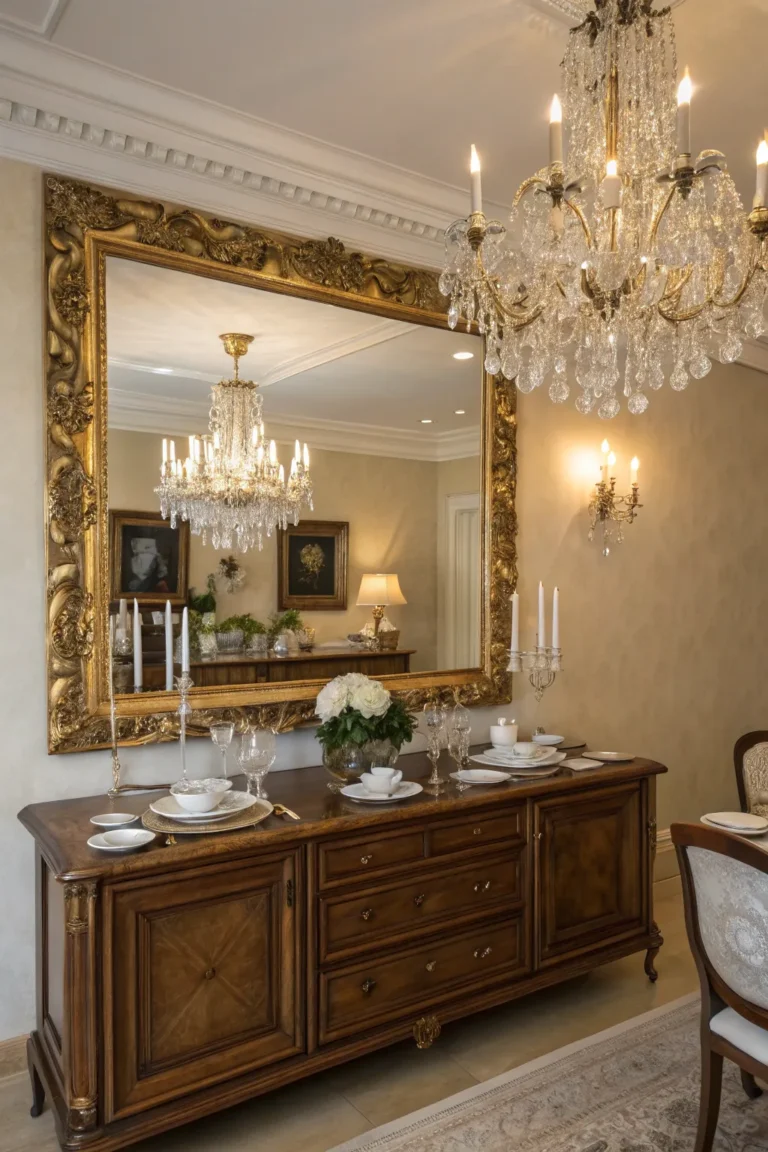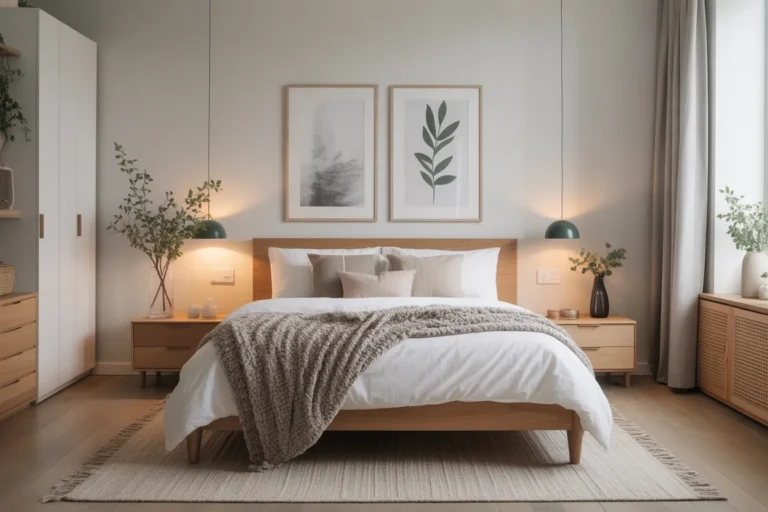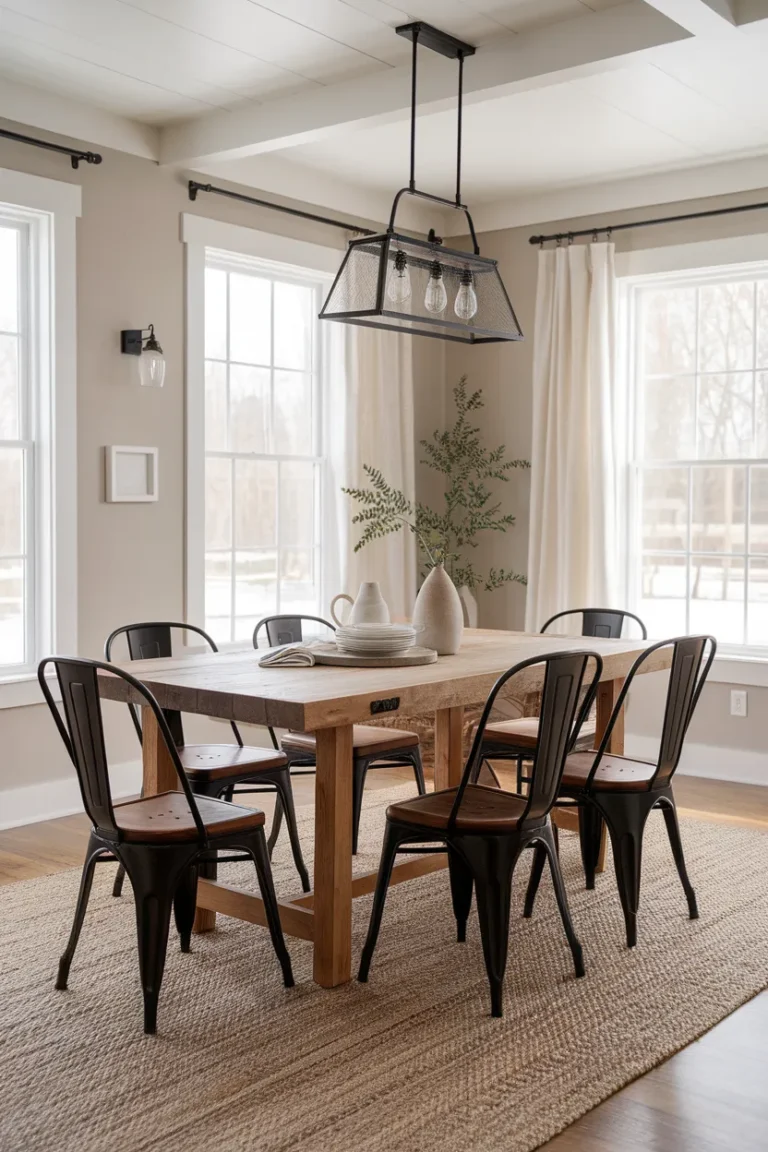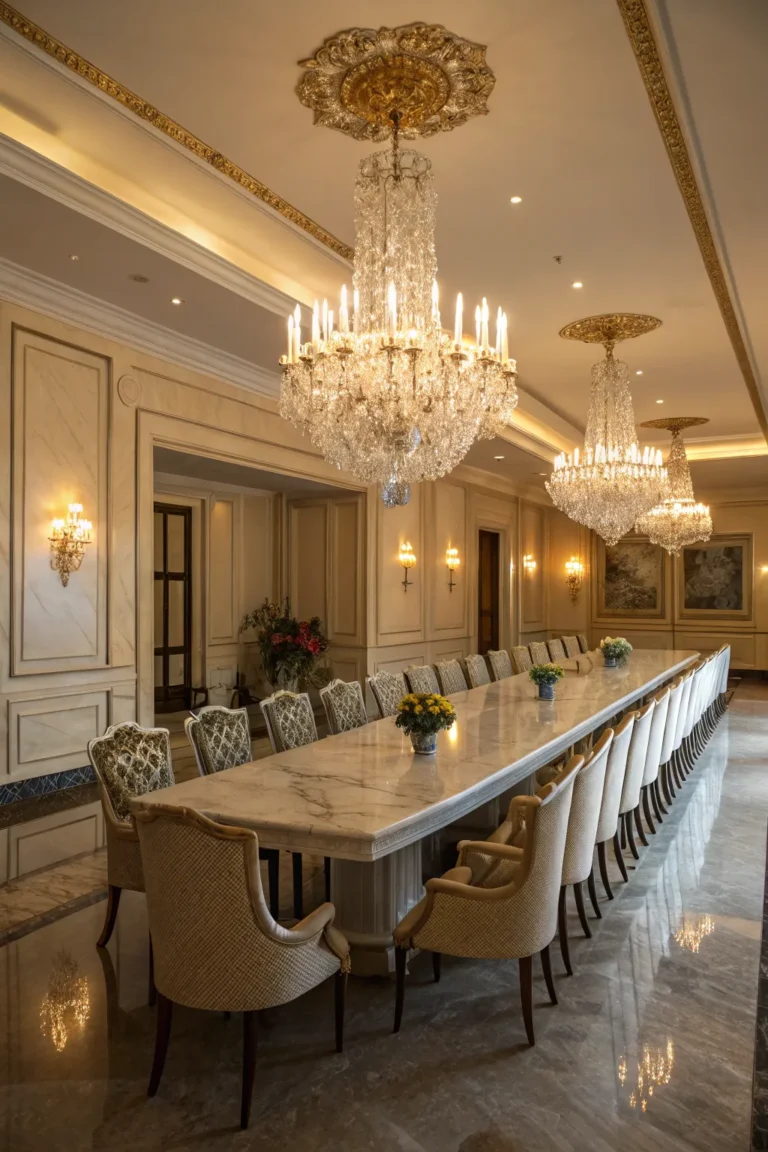13 Dining Room Mirror Ideas to Brighten and Enlarge Your Space
Look, I’m not going to sugarcoat it—your dining room probably feels smaller than it actually is. Mine did too, until I figured out the absolute game-changer that mirrors can be. We’re talking instant brightness, the illusion of square footage you didn’t know you had, and that designer-level polish that makes guests think you actually know what you’re doing. Spoiler alert: you don’t need a massive renovation budget. You just need the right mirror in the right spot.
In this article, we'll cover
- 1. The Statement Wall Mirror
- 2. Mirror Gallery Wall
- 3. Mirrored Buffet or Sideboard
- 4. Antiqued Mirror Panels
- 5. Round Mirrors Above the Sideboard
- 6. Mirror-Backed Shelving
- 7. Mirrored Ceiling Medallion
- 8. Leaning Floor Mirror
- 9. Window-Style Mirror Frames
- 10. Mirrored Wall Trim or Wainscoting
- 11. Vintage Mirror Cluster
- 12. Narrow Vertical Mirrors
- 13. Mirror with Built-In Shelf
- Final Thoughts
1. The Statement Wall Mirror
Go big or go home, right? A massive floor-to-ceiling mirror on one wall instantly doubles your visual space. I’m talking about those dramatic pieces that make people stop and stare when they walk into your dining room.
Here’s what makes this work so well: the mirror reflects your entire dining setup, the chandelier, the table spread—everything. It creates this almost gallery-like effect that transforms even the most basic dining room into something magazine-worthy. Position it opposite a window if you can. Trust me on this one—the natural light bounces around like crazy and suddenly you’re dining in what feels like a sun-soaked conservatory instead of that dark corner you were worried about.
Pro tip: Don’t center it on the wall just because that’s what feels “right.” Sometimes an off-center placement creates more visual interest and doesn’t compete with your dining table’s positioning.
2. Mirror Gallery Wall
Ever thought about treating mirrors like artwork? Because that’s exactly what a gallery wall does, except it’s way more functional than your average art collection.
Mix different shapes—round, rectangular, hexagonal, whatever speaks to you. Vary the sizes and frame styles too. I went with a combination of vintage gold frames and modern black ones, and honestly, it shouldn’t work but it absolutely does. The eclectic vibe adds personality while still reflecting light from multiple angles.
The beauty here is flexibility. You can start with three or four mirrors and add more over time. No pressure to nail the perfect arrangement on day one. FYI, this approach works especially well in narrow dining rooms where one large mirror might feel overwhelming.
3. Mirrored Buffet or Sideboard
Why stop at wall mirrors when your furniture can get in on the action? A mirrored buffet or sideboard serves double duty—storage plus light reflection—and looks ridiculously expensive even when it’s not.
I picked up a mirrored sideboard from a budget furniture store (yeah, the kind you have to assemble yourself), and guests constantly ask where I found such a “luxurious” piece. The mirrored panels catch light from every angle, making your dining essentials look like they belong in a boutique hotel. Plus, it reflects your table setting from below, creating this layered, dimensional effect that photographs incredibly well.
Key considerations:
- Keep it clean (fingerprints are your enemy)
- Style the top with minimal decor so the mirror can do its thing
- Place it where it reflects something attractive—not your kitchen chaos
4. Antiqued Mirror Panels
Want that French bistro vibe without flying to Paris? Antiqued mirror panels deliver old-world charm with modern functionality. The subtle distressing and aged patina diffuse light in this soft, romantic way that regular mirrors just can’t match.
I installed three tall antiqued panels behind my dining table, and the effect is chef’s kiss. They don’t create that harsh, gym-like reflection you sometimes get with standard mirrors. Instead, everything looks slightly softer, more forgiving, more elegant. Your less-than-perfect paint job? Hidden. That weird corner where the walls don’t quite meet? Nobody notices anymore.
5. Round Mirrors Above the Sideboard
There’s something perfectly balanced about placing a round mirror (or two) above your sideboard. It’s like the design gods specifically created this combination to work together. 🙂
The circular shape softens the typically rectangular lines of dining furniture—your table, your sideboard, your windows. I went with a 36-inch brass-framed round mirror, and it became the focal point that tied my entire color scheme together. The curve also prevents that overly formal, matchy-matchy feeling you can get when everything’s square and serious.
Size matters here: The mirror should be roughly two-thirds the width of your sideboard. Any smaller and it looks timid; any larger and you’ve overwhelmed the piece it’s supposed to complement.
6. Mirror-Backed Shelving
Ready for something a bit more architectural? Mirror-backed open shelving creates depth while giving you a place to display your fancy dishes and glassware. Every plate, every wine glass gets reflected, making your collection look twice as impressive.
This idea works phenomenally well in smaller dining spaces. The mirrors push the visual boundaries back, the shelves provide much-needed storage, and suddenly you’ve solved two problems with one elegant solution. I installed three floating shelves with mirrored backing, and my modest dish collection now looks like something from a restaurant supply catalog.
Line your shelves with LED strip lighting for extra drama. The light reflects in the mirror, creating this warm glow that makes evening dinners feel special even when you’re just reheating leftovers.
7. Mirrored Ceiling Medallion
Okay, hear me out on this one—a mirrored ceiling medallion around your chandelier sounds extra, but it’s actually genius. It amplifies your lighting fixture’s impact without requiring you to buy a bigger, more expensive chandelier.
The mirror reflects the chandelier’s light downward and outward, brightening the entire dining table. It also adds an unexpected decorative element that people don’t see coming. When I first installed mine, everyone looked up and went “wait, what’s that?” in the best possible way. It’s conversation-starting without being weird or over-the-top.
Installation note: These are surprisingly easy to mount—most come with adhesive backing. Just make sure your ceiling is clean and flat-ish.
8. Leaning Floor Mirror
Can’t commit to drilling holes in your walls? A large leaning floor mirror gives you all the benefits with zero permanent damage to your rental walls. Plus, the casual lean adds this effortlessly chic vibe that feels very “I hired an interior designer but I definitely didn’t.”
Position it in a corner where it catches both natural and artificial light. The angled placement creates interesting light patterns throughout the day. IMO, this is one of the most versatile mirror options because you can move it around until you find the perfect spot. Not working in that corner? Try the other one. Easy.
Go for something substantial—at least 6 feet tall—so it makes a real statement and doesn’t look like you just propped up your bedroom mirror because you ran out of ideas.
9. Window-Style Mirror Frames
Window-style mirrors with divided panes trick your brain into thinking there’s another window in the room. It’s basically architectural catfishing, and it works beautifully.
These mirrors add architectural interest to plain walls while maintaining that light-bouncing functionality. I hung one on my solid wall opposite the actual window, and the symmetry makes the room feel intentionally designed rather than “I’m working with what I’ve got here.” The divided panes also break up the reflection, so it’s less obvious that you’re looking at a mirror and more like you’re glimpsing another space.
Style variations:
- Arched tops for traditional/farmhouse vibes
- Clean rectangles for modern spaces
- Black frames for industrial edge
- White frames for coastal/cottage feels
10. Mirrored Wall Trim or Wainscoting
Want to go subtle but impactful? Mirrored wainscoting or trim adds reflective surfaces without dominating the room. This creates a sophisticated, almost subliminal brightness that people feel more than notice.
The lower wall placement means you’re not constantly catching your reflection during dinner (nobody wants that), but you’re still getting serious light amplification. The mirror panels reflect the lower half of the room—chair legs, your dog begging for scraps, the beautiful rug you splurged on—creating visual depth without the “hall of mirrors” effect.
This option requires more planning and probably professional installation, but the end result looks incredibly high-end. It’s permanent though, so make sure you’re ready for the commitment. :/
11. Vintage Mirror Cluster
Nothing says “I have style and stories” like a collection of vintage mirrors grouped together. Hit up estate sales, antique shops, or your grandmother’s attic, and gather mirrors with character—ornate frames, unusual shapes, different eras all mixing together.
The imperfect, mismatched nature of vintage mirrors adds warmth and personality that new mirrors simply can’t replicate. Each piece has history, and together they create this collected-over-time look that interior designers spend thousands trying to achieve. I found five vintage mirrors over six months, spending maybe $150 total, and they’re hands-down my favorite design element in the entire house.
Arrangement strategy: Lay them out on the floor first. Take a photo. Move them around. Take another photo. Compare. This saves you from making seventeen unnecessary nail holes in your wall.
12. Narrow Vertical Mirrors
Got a narrow dining space or an awkward alcove? Tall, narrow vertical mirrors draw the eye upward, making low ceilings feel higher and tight spaces feel more open. They’re the optical illusion your cramped dining room desperately needs.
Place several narrow mirrors side by side for a paneled effect, or use a single dramatic vertical piece. Either way, you’re creating vertical lines that lift the space. I used three matching 6-foot-tall mirrors with thin black frames, and my 8-foot ceiling suddenly looks way more impressive than it actually is.
The narrow width means you can fit mirrors in spaces where wider mirrors would overwhelm—beside doorways, between windows, in that weird skinny wall section that’s always been useless.
13. Mirror with Built-In Shelf
Functionality meets style with mirrors that include an integrated shelf. You get your light reflection plus a spot for candles, small plants, or decorative objects. It’s like the furniture designers finally understood that we need surfaces everywhere.
These work beautifully flanking a doorway or creating a symmetrical moment on a feature wall. The shelf breaks up the mirror’s reflection, adding visual interest and practicality. I keep fresh flowers on mine, and the reflection makes one small bouquet look like an entire garden situation.
Styling the shelf:
- Keep it minimal—three objects maximum
- Vary heights for visual interest
- Choose items that look good reflected
- Rotate seasonally to keep things fresh
Final Thoughts
Mirrors aren’t just for checking whether you’ve got spinach in your teeth before guests arrive (though that’s certainly useful). They’re legitimate design tools that brighten, enlarge, and elevate your dining room without requiring structural changes or massive budgets.
The trick is choosing mirrors that match your style while serving the functional purpose of light reflection and space expansion. Whether you go bold with a statement piece or layer several smaller mirrors for a collected look, you’re making a smart move that’ll transform how your dining room feels. And honestly? That transformation happens faster than you’d think. Sometimes the simplest changes create the biggest impact—and mirrors definitely fall into that category.
Discover more from Leafy Haven Home | Stylish Garden Ideas & Cozy Decor Tips
Subscribe to get the latest posts sent to your email.

